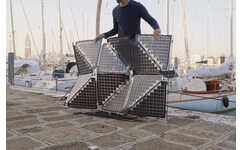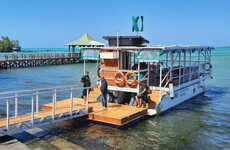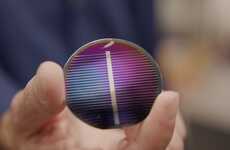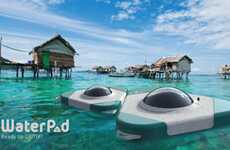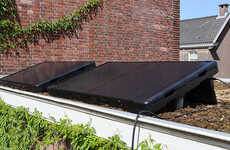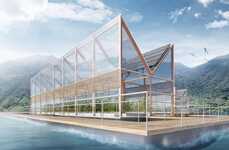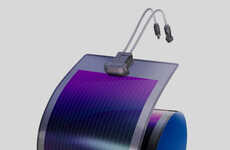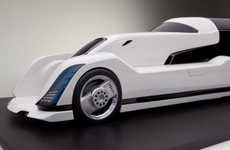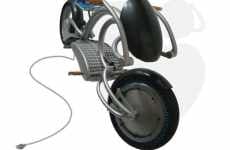
Sunengy's Liquid Solar Array System Glides Over The Ocean
Michael Plishka — April 21, 2009 — Eco
References: sunengy
It's not cheaper than fossil fuel, but it's cleaner and cooler - literally and figuratively.
Sunengy's Liquid Solar Array system is designed to float on the surface of the ocean. A large lens follows the sun across the sky throughout the course of the day, focusing the sun's rays on a solar cell.
The cell itself is cooled by ocean water. In the event of storms, the entire system rotates itself under water, protecting all the vital components.
Implications - Made mostly from plastic, the Liquid Solar Array system holds a myriad of floating solar collectors. Each of these comes equipped with silicon photovoltaic cells at the water surface and is easily able to track the sun.
Sunengy's Liquid Solar Array system is designed to float on the surface of the ocean. A large lens follows the sun across the sky throughout the course of the day, focusing the sun's rays on a solar cell.
The cell itself is cooled by ocean water. In the event of storms, the entire system rotates itself under water, protecting all the vital components.
Implications - Made mostly from plastic, the Liquid Solar Array system holds a myriad of floating solar collectors. Each of these comes equipped with silicon photovoltaic cells at the water surface and is easily able to track the sun.
Trend Themes
1. Floating Solar Arrays - Developing innovative systems that harness solar energy on bodies of water, such as oceans and lakes, offers disruptive opportunities for sustainable energy production.
2. Lens-based Solar Tracking - Integrating large lenses to follow the movement of the sun across the sky can optimize solar energy collection and improve the efficiency of photovoltaic cells.
3. Water-cooled Solar Cells - Utilizing water from the ocean or other bodies of water to cool solar cells can enhance their performance and prevent overheating, unlocking new possibilities for efficient solar energy generation.
Industry Implications
1. Renewable Energy - The renewable energy industry can explore the use of floating solar arrays and water-cooled solar cells to increase the capacity and efficiency of solar energy production.
2. Sustainable Technology - The development and implementation of lens-based solar tracking systems can contribute to the growth of sustainable technology, making renewable energy more accessible and efficient.
3. Marine Engineering - The field of marine engineering can leverage the technology behind floating solar arrays to create innovative solutions for harnessing solar energy in oceans and other water bodies.
4
Score
Popularity
Activity
Freshness

